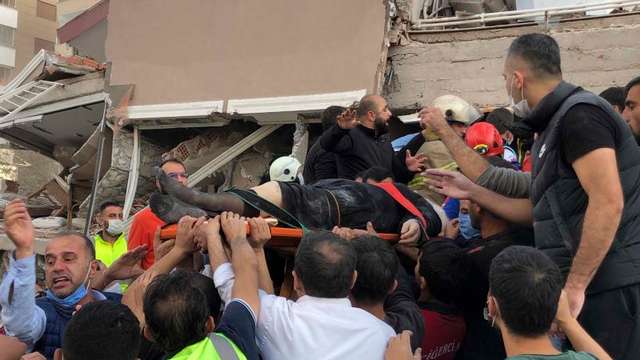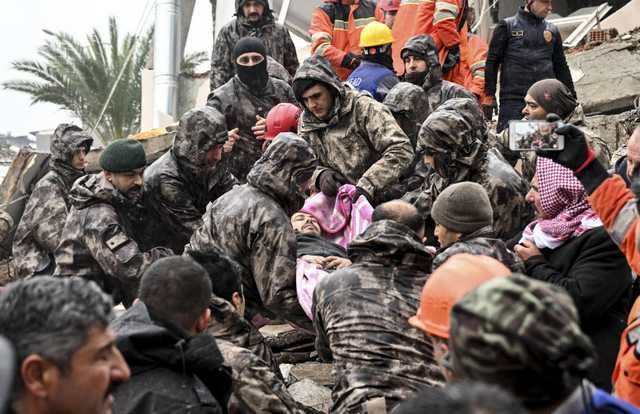
The Turkish government has arrested at least 200 people involved in the construction of the buildings that collapsed during the recent earthquake that killed at least 50,000 people in Turkey and Syria. Bekir Bozdag, the country’s minister for justice, disclosed this on Saturday.
The quake, one of the worst in human history, caused the collapse of about 5,700 buildings in Turkey, according to AFAD, the country’s disaster management agency. The inategrity of the buildings has been questioned, with many saying the death toll would have been minimal if the constructions were not faulty.
Justice Minister Bekir Bozdag said there are at least 626 people suspected to be involved in the poor construction of the collapsed buildings. He added that some of these suspects died in the earthquake while the police are searching for any perpetrator still alive. Evidence has also been collected from thousands of collapsed buildings.
Several experts have agreed with the Turkish government that the death toll was a result of faulty foundations in most of the collapsed buildings.
The standard of buildings was to blame
Earthquake experts and building engineers have argued that the structures would have better withstand the shake if built according to the government’s specifications.
“Buildings made of steel would actually respond quite well in earthquakes because they’re a little bit flexible,” Alanna Simpson, a disaster risk management expert, told NPR. “So the more steel reinforcement in a building, the better it’s likely to respond.”
Seismologists believe Turkey is located in a tectonically active area. The three tectonic plates, the Arabia, Africa, and Anatolia plates, touch and interact with each other. Hence there is a high possibility of frequent earthquakes in the country and neighbouring Syria.
Therefore, in 2004, the Turkish government passed a law that compelled all buildings to meet the minimal standard of quake resistance. In 2018, the law was reviewed, and the standard was further raised. However, there are arguments that there is poor implementation of the law, and even the construction companies were unwilling to abide by the construction code. Hence, there are several buildings in Turkey, although recently constructed, do not meet the government’s specifications.
Additionally, there are buildings in Turkey constructed before the law took effect in 2004. Most of these buildings are still standing in the country and are likely to go down if there is a major earthquake.
Kit Miyamoto, an expert in disaster resiliency engineering, told NPR that the Turkish laws regarding buildings are good but most of the buildings predate these instructions.
“Anything built prior to 2000 can be considered very dangerous,” Miyamoto stated. He added that even some new constructions do not meet the building codes as there is no “robust” implementation of the laws.
“Quality control in the field really matters,” he added.
Yasemin Didem Aktas, a structural engineer at the University College London, told CNN that the severity of the earthquake could have affected any building, including those that followed the rules closely. But the extent of the damage meant that most of the buildings did not meet the minimum safety standards.
“What we are seeing here is definitely telling us something is wrong in those buildings, and it can be that they weren’t designed in line with the code in the first place, or the implementation wasn’t designed properly,” Aktas said.
The pancake collapse
Another earthquake engineering expert in Istanbul, Mustafa Erdik, believes the pattern of buildings collapses were a result of how they were constructed.
“The thing that strikes mostly are the type of collapses – what we call the pancake collapse – which is the type of collapse that we engineers don’t like to see,” Mustafa Erdik told CNN. “In such collapses, it’s difficult – as you can see – and a very tragic to save lives. It makes the operation of the search and rescue teams very difficult.”
A pancake collapse happens when the foundation of a building or the load-bearing parts of a building is damaged.
“Pancake collapse refers to a structural collapse where the collapse occurs from the top down as upper floors settle into lower floors of a building. This type of collapse is called as such because the collapsed floors result in what appears as a stack of pancakes,” study.com explains.
While the government has arrested the builders of the collapsed buildings, most people have called out the government for not ensuring compliance with its own rules. Hence, they believed the government is to be blamed. So far, approximately 50,000 people have been killed in the disaster in Syria and Turkey.






0 Comments